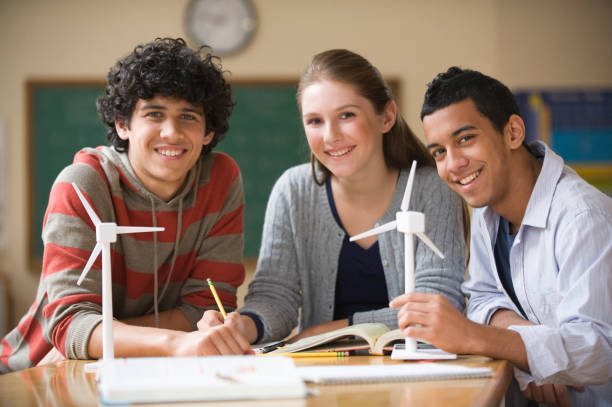Project-Based Learning (PBL) is transforming the way high school students engage with education. Rather than memorizing facts for a test, students dive into real-world problems, collaborate in teams, and build tangible solutions through hands-on experiences. With an emphasis on inquiry, creativity, and student-driven learning, PBL equips teens with critical thinking, communication, and leadership skills they’ll need far beyond graduation.
In this article, we’ll explore the best project-based learning ideas for high school across subjects like STEM, humanities, arts, and life skills. Whether you’re a teacher, parent, or school administrator, these ready-to-use ideas will help create an engaging, student-centered classroom that meets educational goals while sparking student passion.
What is Project-Based Learning?
Project-Based Learning (PBL) is an instructional method where students learn by actively exploring real-world problems and challenges. Rather than passive instruction, PBL uses student-led inquiry, collaboration, and authentic outcomes to drive learning.
PBL helps students:
- Apply knowledge across subjects
- Build problem-solving and research skills
- Collaborate in teams or peer groups
- Develop confidence and responsibility
Example: Instead of writing an essay on climate change, students might design a sustainable school garden or launch an awareness campaign.
STEM-Based Project Ideas
1. Build a Solar-Powered Device
Focus: Engineering, Environmental Science
Challenge students to design a small solar-powered gadget like a phone charger, fan, or lamp. They’ll learn about renewable energy, electrical circuits, and design thinking.
Bonus Tip: Have students present their prototype in a “Green Tech Expo” to peers and parents.
2. Create a Budget for a Space Mission
Focus: Math, Physics, Economics
Students act as NASA teams and calculate the cost, logistics, and mission design for a space trip to Mars. This develops skills in mathematics, physics, and project management.
Bold Keywords: cross-curricular learning, STEM integration, problem-solving
Social Studies & Humanities Projects
3. Document Local Oral Histories
Focus: History, Writing, Cultural Studies
Assign students to interview local elders and compile stories into a digital magazine or podcast. This builds research, empathy, and interviewing skills while preserving community heritage.
4. Design a Mock Political Campaign
Focus: Civics, Government, Debate
Students choose an issue, develop a platform, and simulate a campaign with posters, speeches, and debates. This encourages civic awareness and public speaking.
Creative Arts Project Ideas
5. Create a Public Art Installation
Focus: Visual Arts, Community Engagement
Let students design an art piece that represents a social issue or celebrates school culture. They’ll learn about visual storytelling, art history, and community outreach.
6. Produce a Short Documentary
Focus: Media Arts, Technology, Journalism
Students write, film, and edit a 5–10 minute video on a topic of interest—school events, mental health, local heroes, etc. They’ll use media literacy, scriptwriting, and digital editing tools.
Bold Keywords: real-world application, digital storytelling, student voice
Life Skills & Career Readiness Projects
7. Launch a Student Business
Focus: Entrepreneurship, Economics, Marketing
Students create a business plan, build a product or service, and sell it at a school market. They’ll learn about financial literacy, branding, and customer engagement.
8. Plan a Sustainable School Event
Focus: Environmental Science, Leadership, Event Planning
Students plan a zero-waste event (Earth Day, Eco-Fair) including logistics, promotions, and sustainability goals. A great way to instill environmental responsibility and teamwork.
9. Develop a Mental Health Awareness Campaign
Focus: Health Education, Social Science
Teams can create posters, host events, or make social media campaigns that promote well-being and destigmatize mental health issues.
Tip: Partner with the school counselor or local organizations for expert input.
Collaboration & Presentation Tips
PBL works best when students:
- Work in diverse groups
- Share roles and responsibilities
- Present to authentic audiences (parents, peers, community)
Use tools like:
- Google Workspace
- Canva for visual design
- Flipgrid or YouTube for presentations
Encourage peer review, reflection journals, and rubric-based assessment for deeper learning.
Benefits of Project-Based Learning in High School
- Increases student engagement
- Improves retention and comprehension
- Fosters independent learning
- Builds leadership and communication
- Encourages real-world problem-solving
According to the Buck Institute for Education, students in PBL classrooms score higher on assessments and develop stronger collaboration skills.
Read Also: Integrating Technology in K–12 Education: 2025 Guide
Conclusion
Project-Based Learning empowers high school students to go beyond textbooks and become active, curious, and capable learners. Whether they’re building solar devices, interviewing community members, or launching businesses, students gain valuable academic, social, and emotional skills. PBL doesn’t just teach content, it cultivates creativity, empathy, leadership, and real-world readiness.
By implementing the project-based learning ideas shared here, educators can foster a classroom culture that celebrates curiosity and achievement. Every project becomes a pathway to discovery, helping students prepare for life in an ever-changing world.
So if you’re ready to ignite student passion, improve academic outcomes, and transform your classroom, it’s time to embrace project-based learning one powerful idea at a time.
FAQs
1. What are some easy project-based learning ideas for high school?
Start with projects like creating infographics, organizing school events, or developing a community service plan. These are low-cost and effective for engaging students.
2. How can I implement PBL in my high school classroom?
Begin with small, subject-specific projects. Set clear learning goals, let students choose topics, and assess based on collaboration, research, and presentation.
3. Why is project-based learning important for teenagers?
PBL promotes critical thinking, self-directed learning, and career readiness, all of which are vital for success in higher education and life.
4. Can PBL be used in every subject?
Yes. Whether it’s science experiments, historical simulations, or art installations, PBL is flexible and enhances any curriculum.
5. How do I assess project-based learning outcomes?
Use rubrics that focus on research quality, collaboration, creativity, presentation, and reflection. Consider peer assessments and self-evaluations for holistic feedback.
